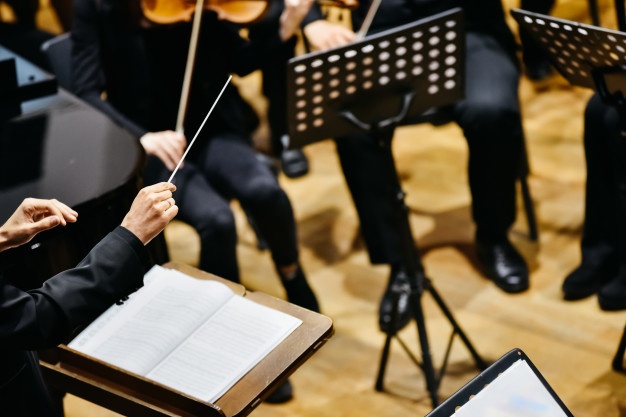
Tempo: Musical Order and Emotion
In music there is a lot of structure and melodies, all of these fall into place thanks to the tempo set for the piece.This not only gives order and structure to the overall sound, it also sets the tone for what is trying to be expressed, for example, sadness is usually slow, happiness is fast, and angry is somwhere in between.
There are different categories of tempo, however these are mostly used in classical music.
- Larghissimo—very, very slow (20 BPM and below)
- Grave—slow and solemn (20–40 BPM)
- Lento—slowly (40–60 BPM)
- Largo—the most common “slow” tempo (40–60 BPM)
- Larghetto—broad, and quite slow (60–66 BPM)
- Adagio—another popular slow tempo, which means “at ease” (66–76 BPM)
- Adagietto—rather slow (70–80 BPM)
- Andante moderato—a bit slower than andante
- Andante—a popular tempo which means “at a walking pace” (76–108 BPM)
- Andantino—slightly faster than andante
- Moderato—moderately (108–120 BPM)
- Allegretto—moderately fast (but less so than allegro)
- Allegro moderato—moderately quick (112–124 BPM)
- Allegro—the most frequently used tempo marking (120–168 BPM, which includes the “heartbeat tempo” sweet spot)
- Vivace—lively and fast (typically around 168-176 BPM)
- Vivacissimo—very fast and lively, even faster than vivace
- Allegrissimo—very fast
- Presto—the most popular way to write “very fast” and a common tempo in fast movements of symphonies (ranges from 168–200 BPM)
- Prestissimo—extremely fast (more than 200 BPM)
However now, there is a more casual way to refer to tempo, for example in jazz they use terms such as such as “fast,” “slow,” “lazily,” “relaxed,” and “moderate”. In electronic music they use BPM which stands for beats per minute, and it actually reflects more of a traditional way of calculating tempo. In electronic music this is very important since its sub genres are determined by its bpm.
Anything that ranges from 60 to 90 bpm can be considered dub, from 60 to 100 bpm it can be hip hop, 115 to 130, house, 120 to 140 techno/trance, 135 ti 145 bpm is dubstep and 160 to 180 drum and bass. Of course as any other art, this can be mixed and slightly changed, but if there is need for a chart, this is the one.
Tempo and Vibrations

Tempo is also a very impactful aspect of live performances, in the sense that it’s easy to notice a change in the audience as it can be felt not only through hearing but the vibrations in the chest. This gives some sort of impulse to follow the mood of the music, that’s why we are used to seeing crowds slowly move from left to right during a slow paced song and jump during a very fast song.
Of course this does not happen very often in classical music as there is a different behaviour in these performances as spectator. In other genres such as rock, hip hop and electronic music, the crowd is a part of the show, and just like the other band mates, the crowd, knowingly and unknowingly follows the rhythm of the drums and the bass.
The Big Mistake

One of the worst mistakes in music is to let go of the ties that binds the melodies with the tempo.Losing the rhythm makes avery sound come as a dissorder to the person who listens to the music. That’s why metronomes are such important tools, as every musician, beginner and experienced must keep this order, It’s actually even better to just miss a note or play the wrong one, but the rhythm means order, and order in music is the part that makes the translation from composer to listener, even more than melodies.
As music history shows us, there has been a lot of experimentation with uncommon melodies and harmonies, even playing with sounds that appear to be out of tune, but the rhythm is never lost, because if that part is ok everything else will follow.
